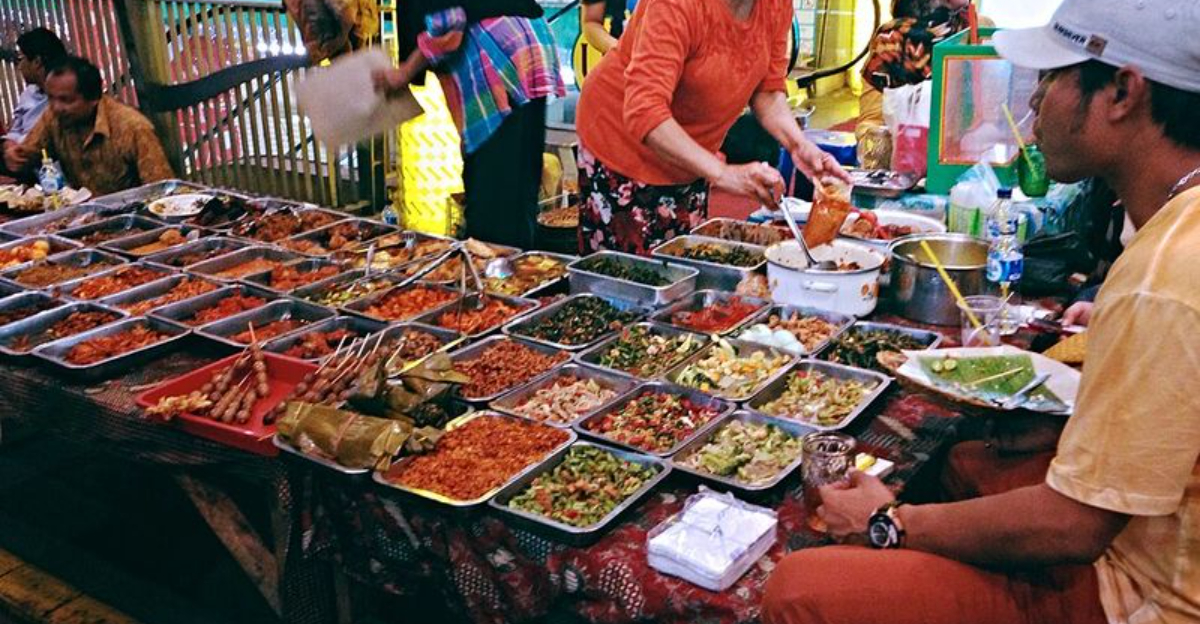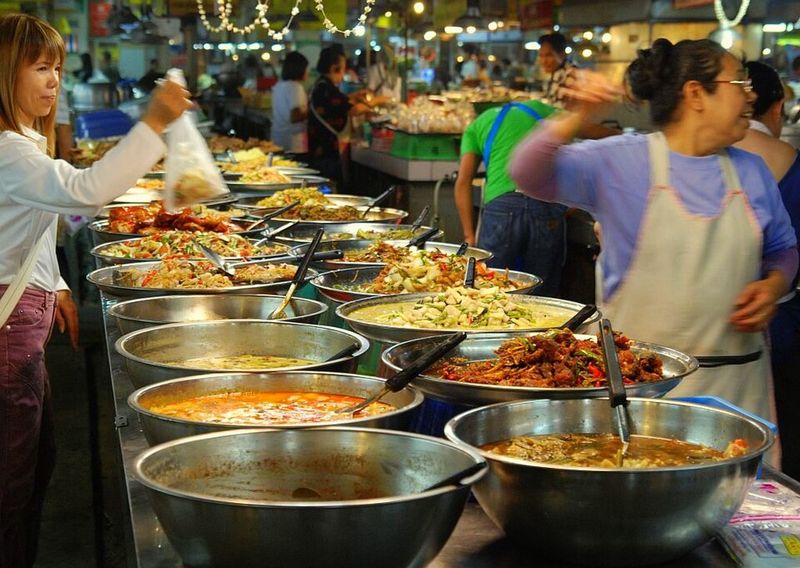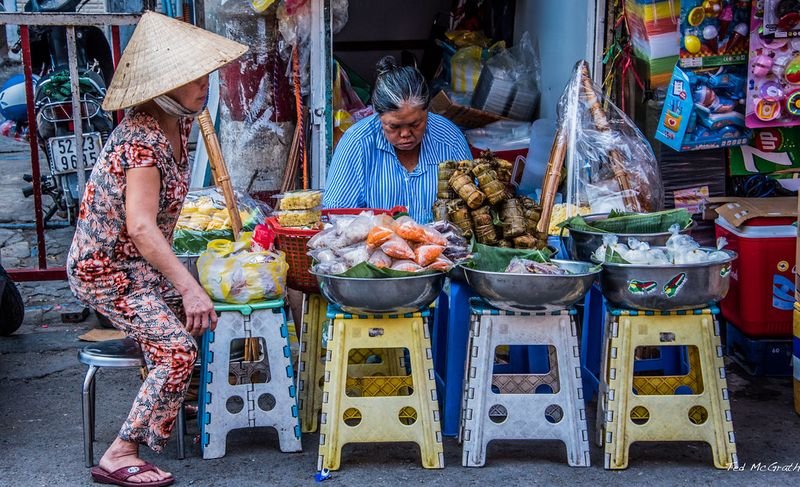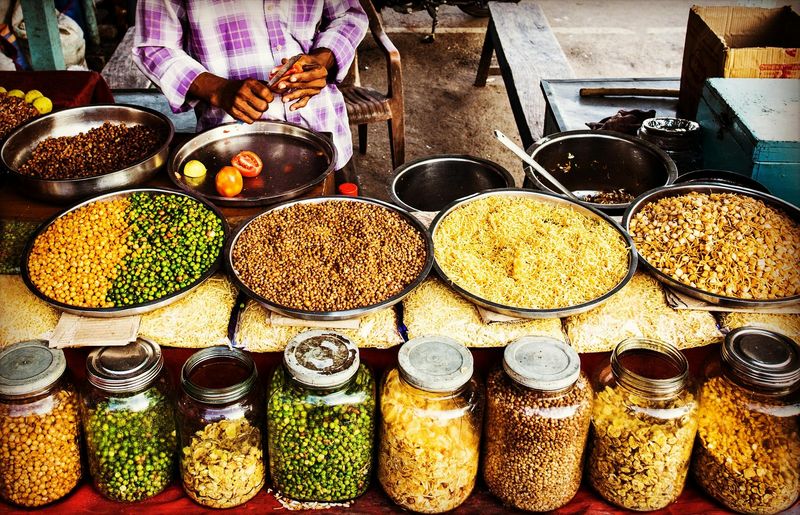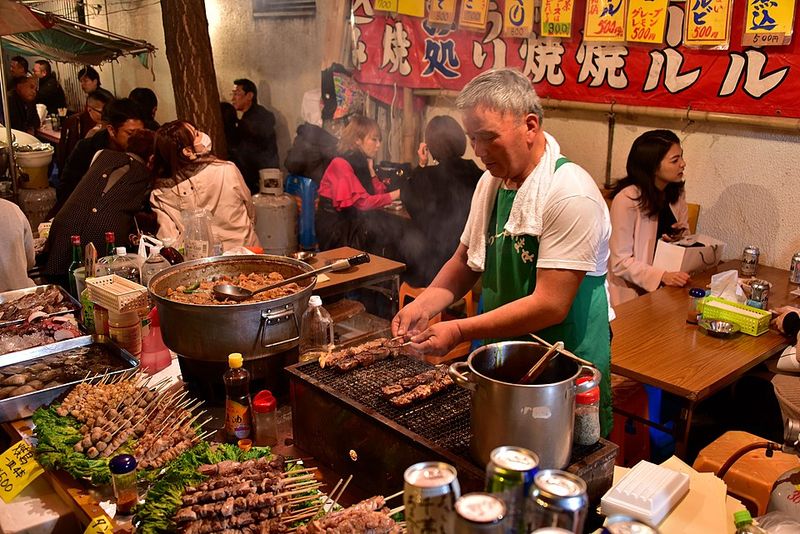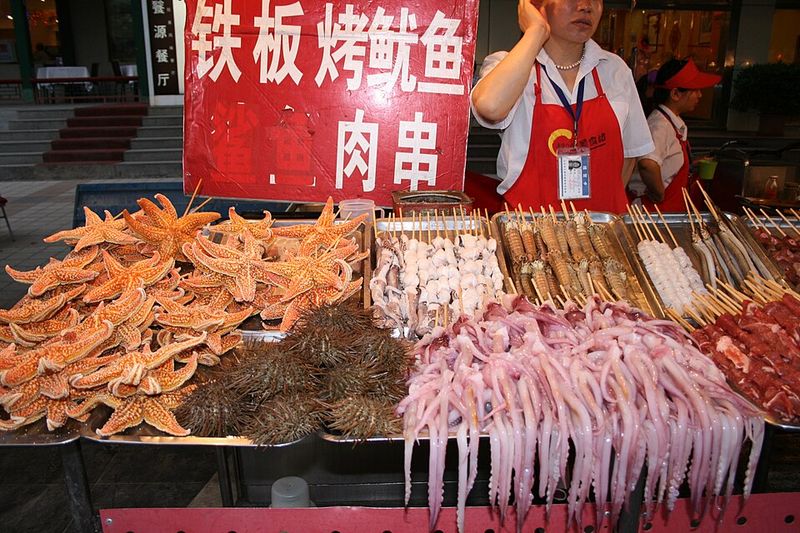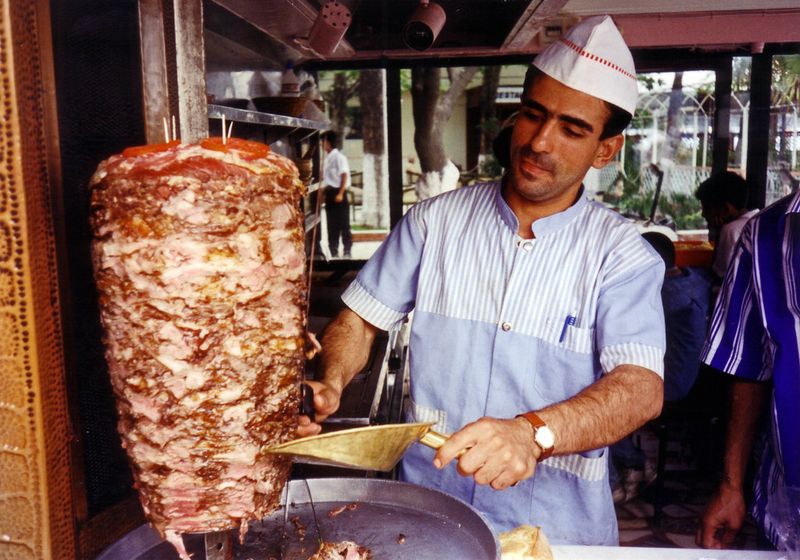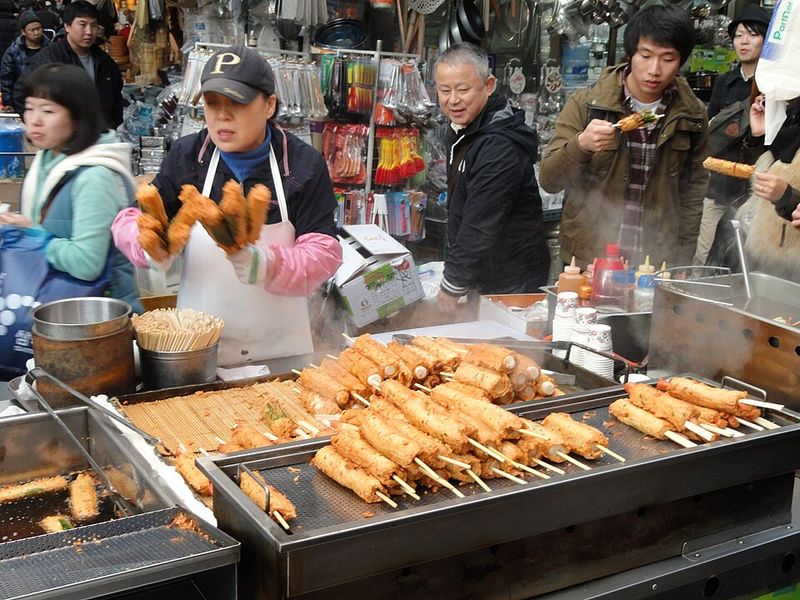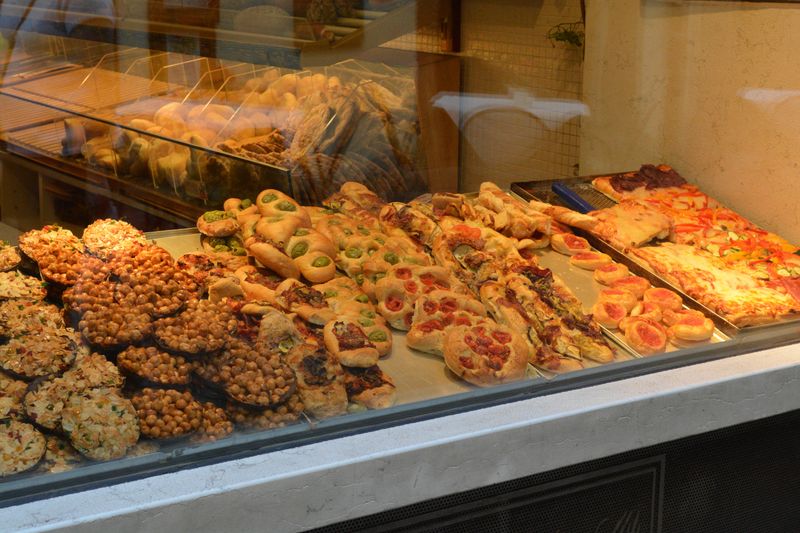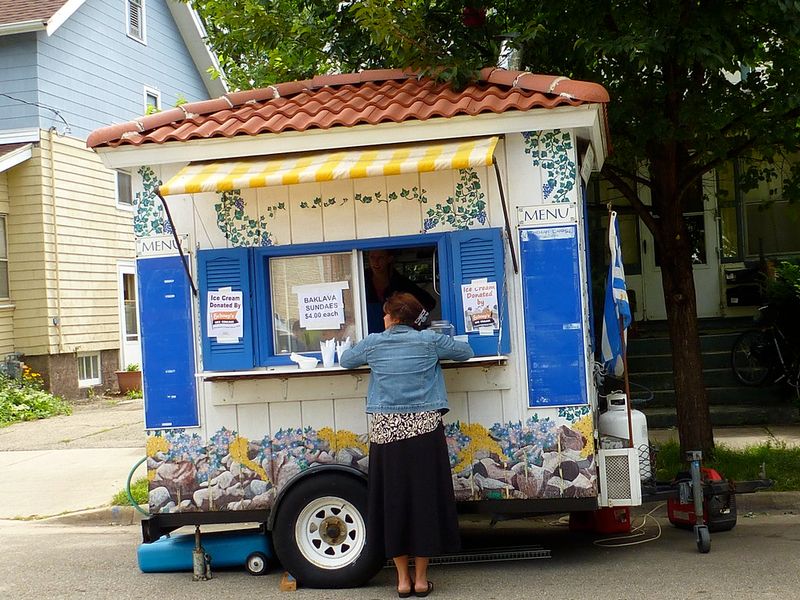The world’s best meals aren’t always found behind white tablecloths—they’re sizzling on sidewalks, glowing under night-market lights, and served with a smile from carts that never stop. From smoky grills to fragrant broths, street food captures a country’s soul in a single bite. Ready to taste authenticity, history, and creativity for just a few coins? This guide takes you through 14 countries where local street food isn’t just delicious—it’s a way of life.
Thailand
Thailand’s street-food culture is legendary for its balance of sweet, sour, salty, spicy, and bitter—often in a single, unforgettable bite. Wander Bangkok’s neon-lit markets or Chiang Mai’s lanes and you’ll smell sizzling woks, charcoal smoke, and fresh herbs everywhere. Must-try staples include pad thai, som tam, moo ping, and mango sticky rice, each prepared fresh before your eyes for maximum aroma and crunch. Vendors move with choreography: noodles tossed mid-air, papaya pounded in clay mortars, skewers lacquered in caramelized glaze. Eating is an all-day ritual, from morning congee to late-night boat noodles. Prices stay friendly, portions perfect for grazing, and variety endless. Sites like coussinthailandais.com, ExploreSEAsia, and atlys.com hint at the breadth, but nothing beats a hungry stroll through a buzzing night market.
Mexico
Mexico’s street food is a living archive of indigenous traditions, colonial history, and regional pride. Tacos al pastor sliced from a glowing trompo, elotes showered with cotija and chilies, tamales unwrapped like gifts, and Oaxacan tlayudas as big as plates—each bite tells a story. Puestos and tianguis hum with community energy, where standing-room-only counters spark conversation between strangers. Corn is king, chiles sing, and salsas range from smoky to searing. You’ll find heritage moles, soulful barbacoa, and citrusy ceviches depending on the region. Morning to midnight, vendors serve commuters, families, and late-night revelers alike. The Dining Destination, regional Mexico guides, and even Tijuana Flats nod to the breadth, but true understanding comes with a salsa-stained napkin in hand and a second taco ordered without hesitation.
Vietnam
Vietnam’s street food is fast, fragrant, and remarkably refined, shaped by regional differences from Hanoi to Ho Chi Minh City. Pho’s aromatic broth, layered with star anise and charred ginger, anchors countless mornings. Banh mi marries crisp baguettes with pâté, herbs, and pickles, while banh xeo crackles into lace-edged perfection. Fresh herbs—mint, basil, perilla—turn each bite into a garden. Vendors set up early and move with friendly efficiency; diners perch on tiny stools and eat shoulder-to-shoulder. The repertoire spans grilled pork with vermicelli, fresh rolls, crab noodle soups, and smoky bun cha. Affordable, varied, and deeply rooted in daily life, Vietnam’s sidewalks function like open-air dining rooms where technique, speed, and tradition converge in bowls and sandwiches that taste far greater than their modest price.
India
India’s street-food universe is vast, dazzling, and irresistibly diverse. From pani puri’s tangy explosions to Mumbai’s vada pav, from northern kebabs to southern dosas, every region boasts its own canon. Chaat counters assemble sweet-sour-spicy symphonies with chutneys, yogurt, and crunchy sev. Markets thrum from dawn tea to late-night snacks, and special events attract pop-up specialists. The breadth reflects India’s languages, climates, and histories, wrapped in breads, folded into leaves, or ladled over steel plates. Expect textures to collide—crunchy, creamy, soft, crisp—layered with masala that lingers. Hygiene-forward stalls are increasingly common, while beloved heritage vendors anchor neighborhoods. Whether you’re grazing old-city lanes or university haunts, the flavors are bold, the prices gentle, and the culinary storytelling endlessly compelling.
Japan
Japan’s street food marries craftsmanship with comfort, delivering precision in every skewer and snack. In Osaka and Tokyo, takoyaki spheres are briskly flipped to custardy centers; yakitori glistens from binchotan charcoal. Taiyaki crackles with warm fillings, while ramen steam fogs chilly sidewalks. Despite Japan’s fine-dining fame, street stalls maintain exacting standards—clean workstations, consistent portions, and time-honed technique. Regional specialties shine: Hiroshima-style okonomiyaki, Hokkaido buttered corn, and Fukuoka’s yatai culture. Queues signal quality, and vendors often perfect a singular item over decades. The result is casual excellence that thrives in narrow alleys and festival streets, where the ritual of watching, waiting, and biting in becomes part of the pleasure. Simple, focused, impeccable—Japan’s street eats celebrate mastery without fuss.
China
China’s street-food spectrum is as expansive as its geography, with each province offering distinctive flavors and techniques. Watch hand-pulled noodles slap counters into silky strands, bite into crisp, eggy jianbing, and explore dumplings from soup-filled xiaolongbao to pan-seared potstickers. Street grills perfume the air with cumin-laced skewers, while Cantonese carts steam delicate dim sum. Xi’an brings flatbreads and roujiamo; Sichuan turns the heat with numbing peppercorns. Many stalls are family operations, recipes honed across generations. Breakfast scenes bustle with soy milk and youtiao; nights glow with hotpot aromas. Portions invite sampling, and prices reward curiosity. In every city, from megametropolises to county towns, sidewalks transform into kitchens, showcasing tradition, ingenuity, and the irresistible rhythm of wok, blade, and flame.
Turkey
Turkey’s street food reflects centuries of trade and cultural crossroads, where Mediterranean freshness meets Central Asian heartiness. In Istanbul, simit vendors balance sesame-ring towers as grills carve ribbons of juicy döner. Lahmacun emerges thin and crisp, ready for lemon and parsley, while midye dolma and roasted chestnuts fuel city strolls. Flavors are bold yet clean—grilled meats, warm breads, tangy yogurt, and fragrant spices. Ferry docks, busy squares, and bazaars hum with vendors who anchor daily life and late-night cravings. Beyond Istanbul, regional finds abound: iskender in Bursa, kokoreç curiosities, and Black Sea corn breads. Affordable, satisfying, and sociable, Turkey’s street eats make snacking an art form and sidewalks a shared table for locals and travelers alike.
South Korea
South Korea’s street-food scene is kinetic, playful, and rooted in comfort. Tteokbokki brings chewy rice cakes in crimson heat, balanced by sweet-syrupy hotteok and savory odeng broths. Stalls stay open late, mirroring the nightlife pulse with crispy Korean fried chicken, tornado potatoes, and gilded corn dogs. Vendors experiment with fillings and toppings—mozzarella cores, gochujang glazes, seaweed sprinkles—without losing classic flavors. Markets like Myeongdong, Gwangjang, and Busan’s BIFF Square showcase both tradition and trend. The experience is interactive: point, watch, taste, repeat. Prices encourage grazing, and the mix of spice, sweetness, and texture keeps you moving down the lane for one more bite. It’s fast, fun, and utterly craveable.
Malaysia
Malaysia’s hawker culture is a delicious dialogue between Malay, Chinese, and Indian traditions. In Penang, char kway teow carries smoky wok hei; in KL, nasi lemak perfumes the air with coconut and sambal. Roti canai flips into flaky layers beside bubbling curries, while satay caramelizes over charcoal. Hawker centers make it easy to sample widely, share plates, and compare styles. Heritage recipes coexist with inventive mashups, fueled by competitive pride among stallholders. Prices remain friendly, portions perfect for tasting, and queues reveal local favorites. The result is a vibrant, communal foodscape where breakfast, lunch, and midnight suppers feel equally festive—and every stall has a story worth chasing with another iced teh tarik.
Taiwan
Taiwan’s night markets are synonymous with joyous snacking, where tradition meets meticulous technique. Gua bao brim with tender pork and pickled greens; popcorn chicken crunches under basil-scented steam. Stinky tofu rewards the adventurous with custardy interiors, while oyster omelettes glisten under sweet-savory sauce. Bubble tea originated here, and the variety of drinks keeps lines humming. Markets like Shilin, Raohe, and Fengjia glow nightly, turning alleys into culinary playgrounds. Stalls often perfect a narrow menu over decades, ensuring consistency and pride. Prices invite grazing, and portability suits the crowds. It’s a sensory spectacle—neon, sizzling griddles, and a chorus of vendors—that never feels gimmicky because the flavors are earnest, balanced, and rooted in family recipes.
Italy
Italy proves that simplicity, quality, and tradition make unbeatable street food. In Rome, pizza al taglio offers airy, crisp slabs topped with seasonal ingredients; arancini crackle with saffron-scented rice and molten centers. Porchetta sandwiches are carved to order, juices soaking into crusty bread, while gelato cools warm afternoons with honest flavors. Each region contributes: Florence’s lampredotto, Puglia’s panzerotti, Sicily’s panelle. Markets and piazzas encourage slow wandering and quick bites alike. The focus is on ingredient integrity—olive oil, tomatoes, herbs, cheeses—handled with restraint and respect. With prices that welcome daily indulgence, Italy’s street food transforms simple staples into portable feasts that feel both rustic and refined.
Greece
Greece’s street food channels Mediterranean brightness into handheld comfort. Souvlaki and gyros deliver tender, charred meats tucked with tomatoes, onions, fries, and tzatziki. Koulouri sesame rings fuel mornings, while loukoumades arrive hot, crisp, and honey-kissed. Ingredients shine—olive oil, lemon, oregano, and ripe produce—making even simple snacks feel vivid. Seaside promenades and urban corners alike host vendors that anchor daily routines. Regional touches appear in Crete’s cheeses or northern pies, keeping menus interesting for repeat tastings. Affordable, convivial, and unfussy, Greek street food invites lingering conversations as much as quick bites, proving that freshness and balance never go out of style.
Morocco
Morocco’s street food is theater and flavor in equal measure, especially in Marrakech’s Jemaa el-Fnaa where smoke and song fill the night. Skewers of lamb sizzle beside bubbling snail soup; harrira comforts with tomatoes, lentils, and warming spices. Msemen griddles into flaky layers, ready for honey or savory fillings, while fresh juices cut through the heat. The market’s spectacle—callers, drummers, storytellers—amplifies appetite. Spices like cumin, paprika, and cinnamon perfume the air, and vendors often represent generations of craft. Prices are negotiable but fair, and hygiene-conscious stalls are easy to spot. Every plate feels like a postcard of North African hospitality and tradition.
Philippines
The Philippines offers a lively, flavor-forward street-food culture that’s equal parts comfort and celebration. From smoky lechón to skewered isaw, grills spark conversation and appetite. Turon crunches with caramelized banana, kwek-kwek delivers a playful bite, and halo-halo refreshes with shaved ice, jellies, and creamy leche flan. Markets and fiestas create a communal rhythm—snack, chat, repeat—well into the night. Regional twists abound, from Cebu’s roasted pork to Iloilo’s batchoy. Vendors balance sweet, salty, and tangy notes with vinegar dips and banana ketchup. Affordable and abundant, Filipino street food reflects resilience, creativity, and joy in every skewer and cup.
Indonesia
Indonesia’s archipelago delivers street food as diverse as its islands, with bold spices and smoky wok hei at every turn. Sate ayam drips peanut sauce and charcoal perfume; nasi goreng crackles with shrimp paste and chiles. In angkringan stalls, small bites pair with sweet tea late into the night. Martabak arrives in savory and dessert forms, layered, crisp, and indulgent. Regional specialties—from Padang’s fiery rendang-influenced snacks to Bali’s babi guling—keep discovery constant. Portions encourage sampling across multiple carts, and prices remain inviting. It’s a flavor atlas powered by sambal, coconut, lemongrass, and kecombrang, cooked fast and served with a smile.
Peru
Peru’s street food distills Andean heritage and coastal freshness into vibrant bites. Anticuchos—garlicky, chili-brushed skewers—sear smoky and tender, while picarones fry into pumpkin-sweet rings lacquered with chancaca syrup. Ceviche stands brighten evenings with lime, ají, and just-caught fish; causa layers potato, avocado, and seafood in portable stacks. Lima’s sidewalks and markets serve as open-air classrooms for Peru’s pantry: corn, potatoes, citrus, and native chilies. Regional differences add texture, from highland soups to Amazonian snacks. Prices invite exploration, and stalls often pass down techniques through families. The result is a street feast that’s zesty, soulful, and unmistakably Peruvian.
